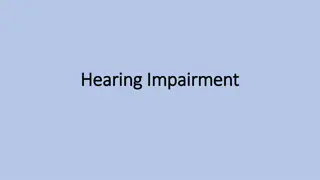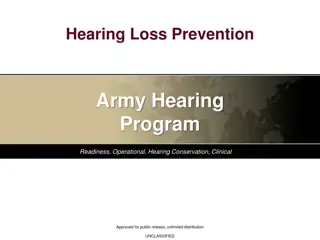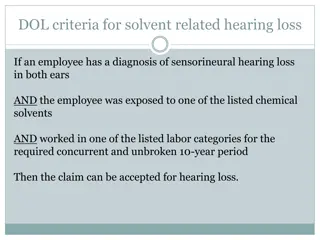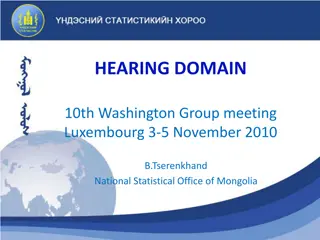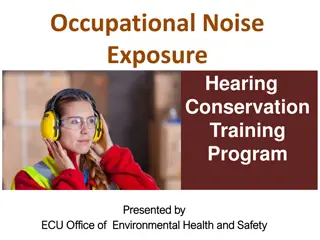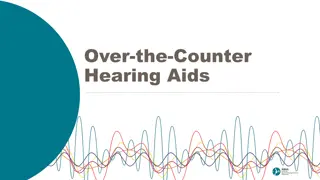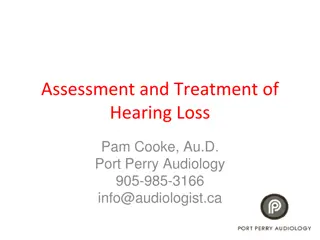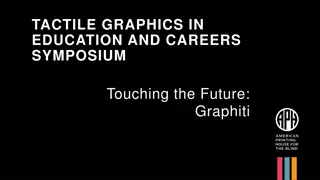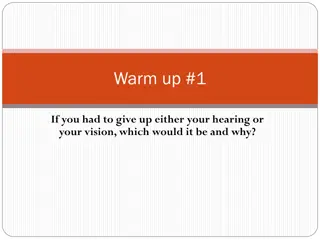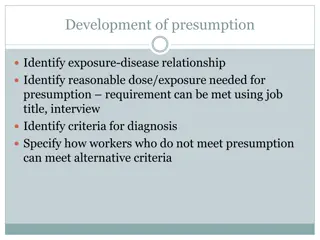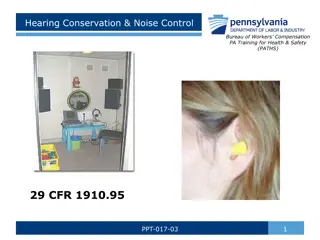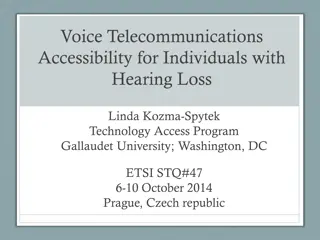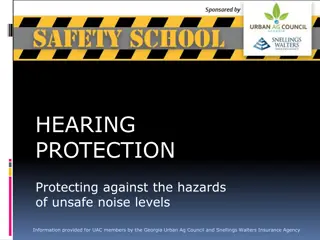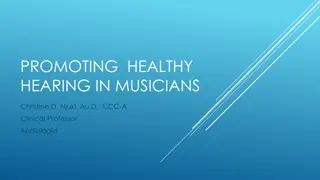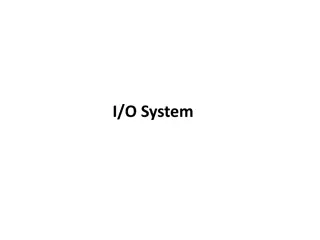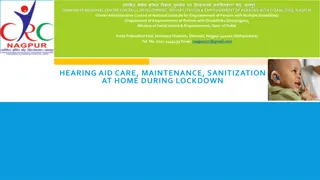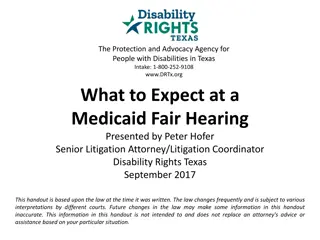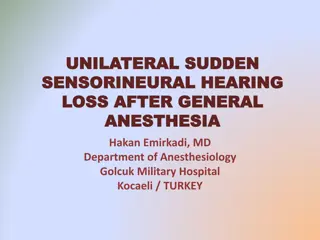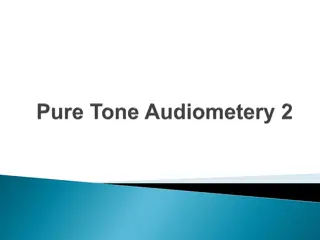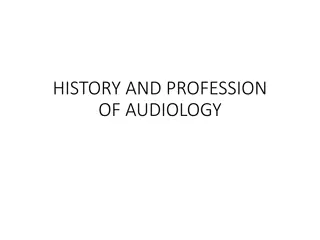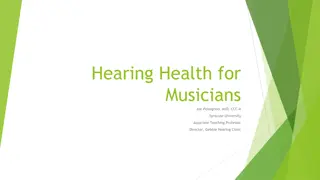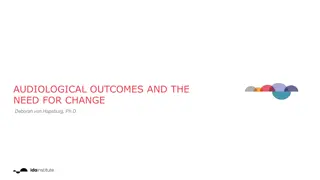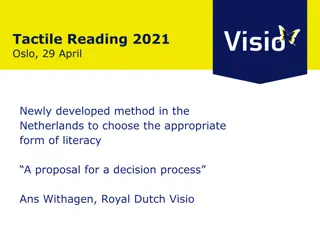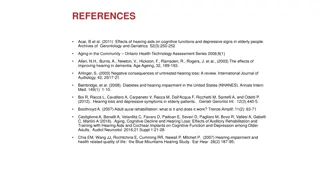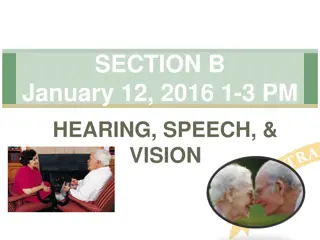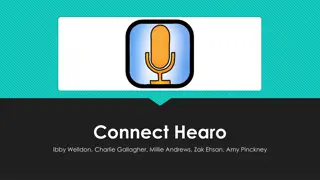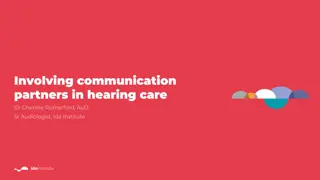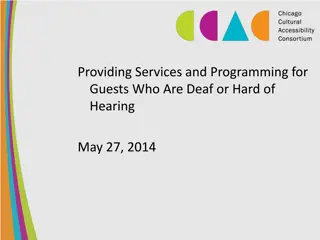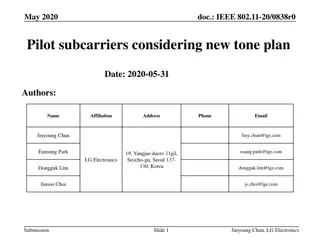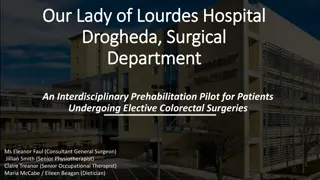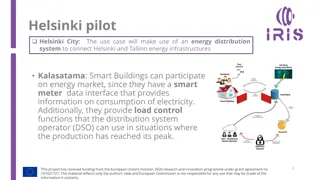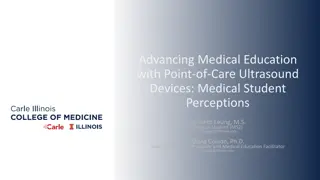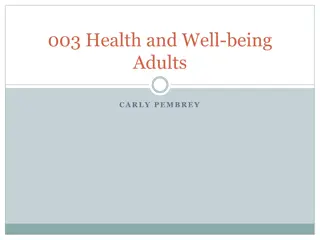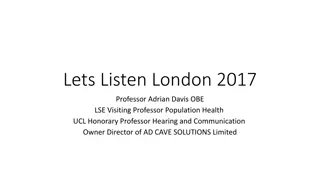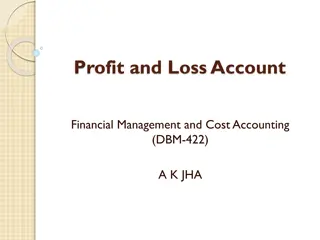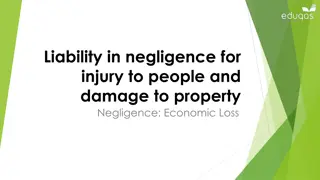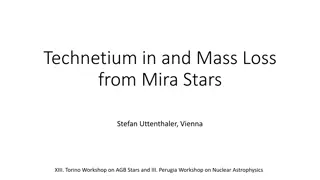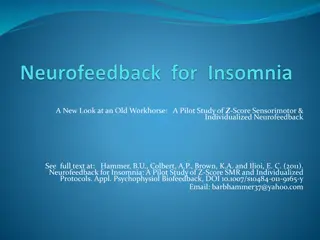Effectiveness of Tactile Waking Devices for Profound Hearing Loss: A Pilot Study
This pilot study explores the effectiveness of tactile waking devices on individuals with profound hearing loss, addressing the need for awakening methods during emergencies. Conducted in Palm Beach County, Florida, the study involved various partners and aimed to identify optimal methods for awakening hearing-impaired individuals in home fire incidents. With a focus on improving safety measures for this population, the research sought to fill the gap in addressing the needs of those with severe hearing impairments or profound deafness.
Download Presentation

Please find below an Image/Link to download the presentation.
The content on the website is provided AS IS for your information and personal use only. It may not be sold, licensed, or shared on other websites without obtaining consent from the author. Download presentation by click this link. If you encounter any issues during the download, it is possible that the publisher has removed the file from their server.
E N D
Presentation Transcript
VISION 20/20 PILOT OF ALARMS FOR PROFOUND HEARING LOSS A pilot study showing the effectiveness of tactile waking devices on the hearing impaired Gerri Penney, Ph.D., EFO Community Education Coordinator Valerie Bryan, Ed.D, Professor, FAU Palm Beach County Fire Rescue 405 Pike Road, West Palm Beach FL 33411 P 561-616-7024; C 561-723-3886; F 561-616-7084
Introduction People with Profound Hearing Loss: What do we know? What s missing? During the development of the 2010 edition of NFPA 72, the technical committees incorporated recent research on waking effectiveness for persons with hearing loss A great deal of discussion centered on the fact that the new requirements do not address those who are severely hearing impaired or profoundly deaf.The committees would like to have scientific data on methods for awakening, alerting and informing persons with profound or total hearing loss . Robert P. Schifiliti, P.E., Chair June 1, 2012 FESHE XIV Conference Technology and Tablets
People with Profound Hearing Loss: What is the problem? What is the research question? What method(s) work best to awaken people who have profound hearing loss in the event of a fire in their home? We needed to do the research. June 1, 2012 FESHE XIV Conference Purpose of the Study Technology and Tablets
Where was the study? Why there? 1,971 sq. miles Larger than Rhode Island & Delaware 1.3+ Million population 363,618 over 60 years 155,540 seniors with some degree of hearing loss 16,000 people with PROFOUND HEARING lossR Census Data 201 Palm Beach County, Florida US Census Data 2010 & Dept. of Elder Affairs
Who did we need to do the study? The Partners in the Study Palm Beach County Fire Rescue (Principal Investigator, secured grant and partners) Area Agency on Aging (Fiscal Agent/ Home Visits) Deaf Service Center (Measurement-Audiology) Florida and the Palm Beach County Association of the Deaf (Promoters & recruiters) Hearing Association of America (Promoters & recruiters) Delray Medical Center (Sleep Suite/Pilot Demo) Florida Atlantic University (Research & Report) MODELS IN FIRE PREVENTION May 4-6, 2012 Palm Beach County Fire Rescue Symposium 2012
What had previous researchers found? Summary Chart of Literature Review Of Findings Re Successful Devices STUDY SUBJECTS SOUND/ AUDIBLE Akerstedt (2002) for Combustion Science Engineering (CSE) Ashley (2007) N=120 (40 deaf, 40 hearing abled,40 hard of hearing) awakening people w/no hearing loss STROBE LIGHT BED SHAKING MOVEMENT Vibrating watch, page, pillow, bed shaker 71% REM awake by watch & pager Vibratory Tactile Device: most successful wakening for all hearing abilities and age (hearing able, hard of hearing, & deaf) SUMMARY NOTES Deaf college students Standard audible detector only effective in Did not sufficiently awaken ANY population Tested hearing able, hard of hearing, & deaf Devices used during Stage 2 sleep(Delta & REM) Deaf responded 90% to pillow shaker & 84% to mattress shaker 27% awoke participants 520Hz square wave auditory signal was most effective-92% awoke participants Intermittent shaking devices most effective for deaf 80-84% awoke participants Chart continues and summary is provided of studies results completed to date
What definitions of terms drove the study? Profoundly Deaf: totally deaf; unable to hear anything Retrieved from http://www.thefreedictionary.com/profoundly+deaf BAHA: used to help people with chronic ear infections, congenital external auditory canal atresia and single sided deafness who cannot benefit from conventional hearing aids. The system is surgically implanted and allows sound to be conducted through the bone rather than via the middle ear - a process known as direct bone conduction. Retrieved from http://www.umm.edu/otolaryngology/baha.htm Cochlear Implant : A cochlear implant is a small electronic device that helps people hear. It can be used for people who are deaf or very hard of hearing. Retrieved from http://www.umm.edu/ency/article/007203.htm#ixzz1vnXxhfjC Hearing Aid: A small electronic apparatus that amplifies sound and is worn in or behind the ear to compensate for impaired hearing Retrieved from http://medical- dictionary.thefreedictionary.com/hearing+aid
Definitions cont. Strobe Light: A strobe light or stroboscopic lamp, commonly called a strobe, is a device used to produce regular flashes of light. Retrieved from http://en.wikipedia.org/wiki/Strobe_light Intermittent Bed Shaker: A bed shaker which goes under the mattress and vibrates the bed in an intermittent pattern awakening the sleeper to an emergency Retrieved from http://www.safeawake.com/Adults%20with%20Varying%20Hea ring%20Levels.html Voice Alarm: Dedicated manual or automatic equipment for originating and distributing voice instructions, as well as alert and evacuation signals pertaining to a fire emergency, to the occupants of a building. Retrieved from http://defineterm.com/?s=voice+alarm
Definitions cont. REM Sleep: Usually, REM sleep occurs 90 minutes after sleep onset. The first period of REM typically lasts 10 minutes, with each recurring REM stage lengthening, and the final one may last up to an hour. During this stage the eyes move rapidly in different directions. Intense dreaming occurs during REM sleep as a result of heightened brain activity, but paralysis occurs simultaneously in the major voluntary muscle groups. REM is a mixture of encephalic (brain) states of excitement and muscular immobility. Retrieved from http://www.webmd.com/sleep-disorders/excessive-sleepiness- 10/sleep-101 Reaction Time (measured in seconds): The time elapsing between the beginning of the application of a stimulus and the beginning of an organism's reaction to it. Retrieved from http://www.merriam- webster.com/medical/reaction%20time Waking Time: Marked by full consciousness, awareness, and alertness. Retrieved from http://www.thefreedictionary.com/waking
How was the study staged & conducted? Initial Approval of Study Western Institute Review Board (WIRB) Certificate of Approval for this study Subjects 50 people, age 50 years or olderwith profound hearing loss 90 dB + were recruited www.youtube.com/watch?v=bEEhaWyc-aM http://www.youtube.com/watch?v=UxYBAFdxJvg Screening Process Application with Palm Beach County Fire Rescue Verification of Hearing Loss with Deaf Service Center s audiologist report Verification of criteria for study with Delray Medical Center Test Site Sleep over at Delray Medical Center Sleep Center Tested with various devices while in REM sleep Data reviewed & forwarded for analysis Final Verification of Data Florida Atlantic University verifies research, conducts literature studies, writes up the report and prepares presentation materials
What processes were used for approval of research? The WIRB process Verification of certificate of researchers knowledge of human subject research Development of: MOU s between agencies Alarm application & qualification form Screening procedures for each agency Adult consent forms Flyers for recruitment Podcasts for recruitment News releases Development of: Participant questionnaires Step-by-step research protocol Spreadsheets for coding of clients Suggested statistical analysis for data sets
What was tested in the sleep lab? Is it light? Is it sound? T3 Or 520 HZ Or Voice Is It movement? June 1, 2012 FESHE XIV Conference What method(s) work best to awaken people who have profound hearing lost in the event of a fire in their home? Technology and Tablets
What devices were used? All devices were operated remotely from the sleep technician s lab. Patient was viewed from remote room. Patient had electrodes to measure input. Photoelectric smoke alarm ADA compliant 177 cd Strobe- Wall and Ceiling mount in the 7109/7139 Series: 710/713 CS/LS- Gentex corporation Modified Bedside Fire Alarm and Clock Lifetone Technology which is a notification appliance that has three modalities: Sound-520 Hz tone and voice annunciation in English and Spanish Fire- Get Out Light- a flashing yellow display screen with FIRE in black block letters and Movement/motion an intermittent bed shaker that can be placed under the pillow or mattress
Prana beds & caring technicians Sleep Lab Photos June 1, 2012 FESHE XIV Conference Technology and Tablets
What methodology & statistical analysis will be used to verify results? The study was a quasi- experimental design Statistical Applications Used for Independent and Dependent Variables Will Include: Chi-Square Factorial ANOVA Cramer s V and Phi Using Version 19 of SPSS Pearson s Correlation Multiple Regression
How will the findings be reported? Any descriptive data on how the intervention was actually delivered in the study Extent to which participants completed the sleep lab, Gender, Age, Most effective hearing devices Indicators of whether the study was successfully carried out e.g., amount of sample attrition Estimates of the intervention s effect on all outcomes measured Any estimates of its effect on subgroups within the study sample
How will the recommendations and conclusions be disseminated? The analyze data will be reported regarding: Various intervention s effectiveness Generalizability to others who receive or could receive the intervention Study limitations Significance to policymakers in fire agencies or communities, community educators, and researchers How Will the Results Be Shared? Reports to Vision 20/20 Presentations at national conferences News and press articles Communication to the deaf community through their networks and organizations Articles in national & international publications


